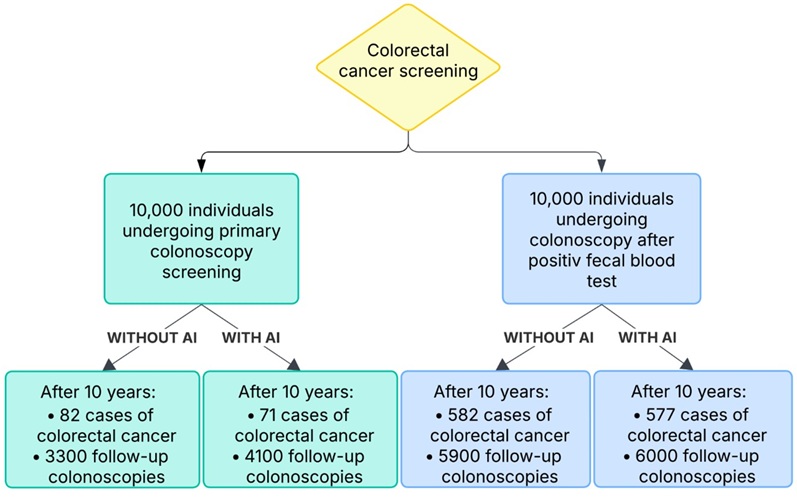World's First Machine Learning Model Combats Wrong-Site Surgery
|
By HospiMedica International staff writers Posted on 24 Feb 2025 |

Wrong-site surgery (WSS), classified as a critical "Never Event," represents a significant failure in healthcare that should never occur. However, due to widespread underreporting, the true frequency of such incidents remains unclear, putting patient safety and healthcare management at risk. The World Health Organization’s (WHO) 2024 Patient Safety Report reveals that only 38% of countries have implemented systems for reporting never events. In the U.S., the Joint Commission recorded 112 surgical errors in 2023, with wrong-site surgeries accounting for 62% of these cases. The lack of comprehensive reporting limits the healthcare system’s ability to assess the scope of the problem and take appropriate preventive actions. Inconsistent documentation is a key factor contributing to WSS. To address this challenge, a new machine learning model provides both real-time decision support and retrospective analysis, aiming to improve surgical safety and quality of care.
AESOP Technology (San Francisco, CA, USA) has developed a groundbreaking solution: the Association Outlier Pattern (AOP) machine learning model utilizing data from the Centers for Medicare & Medicaid Services Limited Data Set (2017–2020) to investigate discrepancies in surgical laterality. Based on this analysis, the AOP model was developed to specifically address the issue of WSS. Unlike traditional rule-based systems, which only check for consistency, the AOP model delves into complex patterns between diagnoses and surgical procedures. It is particularly adept at handling incomplete or unclear diagnostic information, achieving an accuracy rate exceeding 80% in identifying surgical errors, surpassing the performance of existing methods.
The AOP model enables healthcare organizations to identify inconsistencies in medical records, detect unreported surgical errors, and enhance reporting systems. This not only promotes patient safety but also strengthens systems for error prevention. In addition to retrospective analysis, the AOP model provides real-time decision support during surgical planning. It automatically flags incorrect associations between surgical codes and diagnoses, ensuring accurate and complete records. This real-time functionality reduces the risk of errors, positioning the AOP model as an indispensable tool for future electronic health record (EHR) systems.
"We are thrilled with the preliminary outcomes of our research and look forward to integrating these insights into DxPrime's patient safety features this year," said Jim Long, CEO of AESOP Technology. "Our advancements in automating surgery coding show great potential for helping physicians deliver safer care, reduce documentation time, and enable medical coders to perform better concurrent surgery coding and review when patients are still hospitalized."
Related Links:
AESOP Technology
Latest Surgical Techniques News
- New Transcatheter Valve Found Safe and Effective for Treating Aortic Regurgitation
- Minimally Invasive Valve Repair Reduces Hospitalizations in Severe Tricuspid Regurgitation Patients
- Tiny Robotic Tools Powered by Magnetic Fields to Enable Minimally Invasive Brain Surgery
- Magnetic Tweezers Make Robotic Surgery Safer and More Precise
- AI-Powered Surgical Planning Tool Improves Pre-Op Planning
- Novel Sensing System Restores Missing Sense of Touch in Minimally Invasive Surgery
- Headset-Based AR Navigation System Improves EVD Placement
- Higher Electrode Density Improves Epilepsy Surgery by Pinpointing Where Seizures Begin
- Open-Source Tool Optimizes Placement of Visual Brain Implants
- Easy-To-Apply Gel Could Prevent Formation of Post-Surgical Abdominal Adhesions
- Groundbreaking Leadless Pacemaker to Prevent Invasive Surgeries for Children
- Spectroscopy Technique Improves Surgery for Pediatric Epilepsy Patients
- Bioengineered Arteries Show Promise for Cardiovascular Surgery
- Online Tool Guides Surgical Decisions for Gallbladder Cancer
- Innovative Technology Enables Rapid Life-Saving Surgical Leak Detection
- First-Of-Its-Kind Bioresorbable Implant to Help Children with Rare Respiratory Disease
Channels
Artificial Intelligence
view channel
Innovative Risk Score Predicts Heart Attack or Stroke in Kidney Transplant Candidates
Heart researchers have utilized an innovative risk assessment score to accurately predict whether patients being evaluated for kidney transplants are at risk for future major cardiac events, such as a... Read more
AI Algorithm Detects Early-Stage Metabolic-Associated Steatotic Liver Disease Using EHRs
Liver disease, which is treatable when detected early, often goes unnoticed until it reaches advanced stages. Metabolic-associated steatotic liver disease (MASLD), the most prevalent form of liver disease,... Read moreCritical Care
view channel
AI Eye Scans Could Help Identify Heart Disease and Stroke Risk
New research has explored the advantages of utilizing artificial intelligence (AI) retinal imaging for screening cardiovascular diseases in general practice (GP) clinics and highlighted areas where improvements... Read more
Digital Heart Twin Improves Diagnosis and Treatment of Cardiac Arrhythmias
Millions of individuals around the globe suffer from cardiac arrhythmias. Traditionally, electrocardiography (ECG) has been used to detect premature ventricular contractions (PVCs), one of the most common... Read more
First-Of-Its-Kind AI-Powered Probability Scoring System Assesses Heart Failure with Preserved Ejection Fraction
Heart failure with preserved ejection fraction (HFpEF) is one of the most difficult types of heart failure to diagnose due to the intricate interaction between various clinical and echocardiographic factors.... Read morePatient Care
view channel
Portable Biosensor Platform to Reduce Hospital-Acquired Infections
Approximately 4 million patients in the European Union acquire healthcare-associated infections (HAIs) or nosocomial infections each year, with around 37,000 deaths directly resulting from these infections,... Read moreFirst-Of-Its-Kind Portable Germicidal Light Technology Disinfects High-Touch Clinical Surfaces in Seconds
Reducing healthcare-acquired infections (HAIs) remains a pressing issue within global healthcare systems. In the United States alone, 1.7 million patients contract HAIs annually, leading to approximately... Read more
Surgical Capacity Optimization Solution Helps Hospitals Boost OR Utilization
An innovative solution has the capability to transform surgical capacity utilization by targeting the root cause of surgical block time inefficiencies. Fujitsu Limited’s (Tokyo, Japan) Surgical Capacity... Read more
Game-Changing Innovation in Surgical Instrument Sterilization Significantly Improves OR Throughput
A groundbreaking innovation enables hospitals to significantly improve instrument processing time and throughput in operating rooms (ORs) and sterile processing departments. Turbett Surgical, Inc.... Read moreHealth IT
view channel
Printable Molecule-Selective Nanoparticles Enable Mass Production of Wearable Biosensors
The future of medicine is likely to focus on the personalization of healthcare—understanding exactly what an individual requires and delivering the appropriate combination of nutrients, metabolites, and... Read more
Smartwatches Could Detect Congestive Heart Failure
Diagnosing congestive heart failure (CHF) typically requires expensive and time-consuming imaging techniques like echocardiography, also known as cardiac ultrasound. Previously, detecting CHF by analyzing... Read morePoint of Care
view channel
Handheld, Sound-Based Diagnostic System Delivers Bedside Blood Test Results in An Hour
Patients who go to a doctor for a blood test often have to contend with a needle and syringe, followed by a long wait—sometimes hours or even days—for lab results. Scientists have been working hard to... Read more
Smartphone-Enabled, Paper-Based Quantitative Diagnostic Platform Transforms POC Testing
Point-of-care diagnostics are crucial for public health, offering rapid, on-site testing that enables prompt diagnosis and treatment. This is especially valuable in remote or underserved regions where... Read moreBusiness
view channel
Expanded Collaboration to Transform OR Technology Through AI and Automation
The expansion of an existing collaboration between three leading companies aims to develop artificial intelligence (AI)-driven solutions for smart operating rooms with sophisticated monitoring and automation.... Read more
















